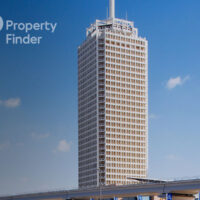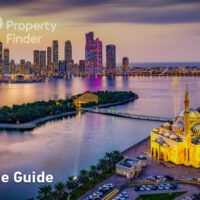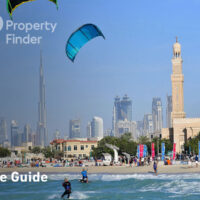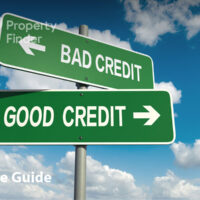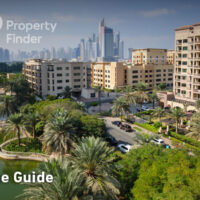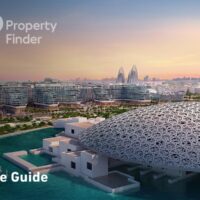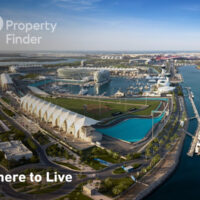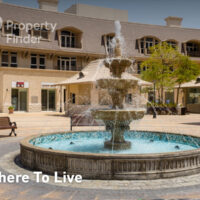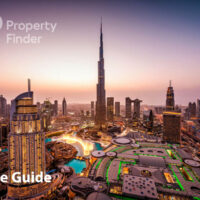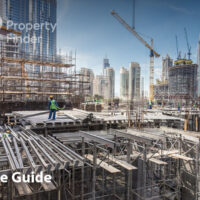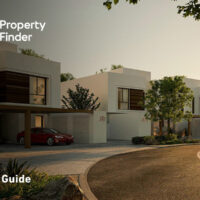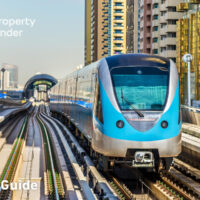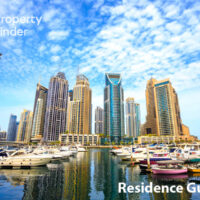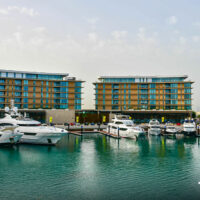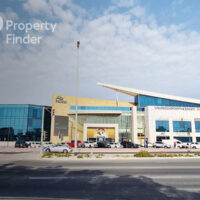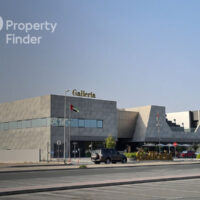Increased amount of residential supply is helping to push prices downward
The first half of 2019 has been in line with what Dubai has witnessed for the past couple of years as far as prices in the property market are concerned. A sustained contraction in prices was evident across nearly all of the communities. While many assert this is a correction in prices, as they have been inflated in years past, this reality does bore some uncertainty for investors when combined with other market factors.
Our view is that these are healthy market movements as affordability is important when residents are factoring in the long-term viability of making Dubai home. Consequently, this contraction has allowed many residents to consider whether they are better off getting into a home of their own rather than continuing to rent. This question has been a trend for the past year and will continue in the years to come especially as residency policies are evolving.
We take a look at some of the reasons behind the continuation of declines in prices for the first half of the year, as well as what new trends have emerged for Property Finder’s users as far as where they are searching for their next home. We will provide some insights for how we think the rest of 2019 will fare, as we approach the much anticipated year of what’s regarded as the “future of tomorrow”, with Dubai on the global stage in 2020.
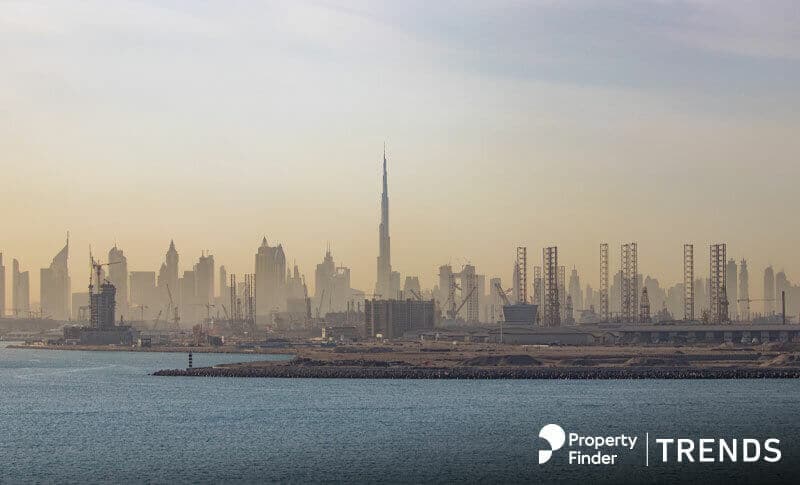
The Property Landscape in 2019
Dubai’s property market is largely marked by two main factors, the first being an unprecedented amount of incoming residential supply and the second is a continued contraction in sales and rental prices across nearly every community in Dubai. Continued price declines can be attributed in large part to the amount of supply entering the market as 2018 saw the overall completion of 33,363 residential units, according to Data Finder, Property Finder’s real estate insights and data platform, and information from Meed Projects. Further reasons for price declines could be attributed to the number of families who may be moving back to their home countries or alternative destinations. Of the families moving into Dubai, their affordability levels may not be the same as previous residents. However, if you focus on these two factors alone, you will miss the forest for the trees.
Despite the uncertainty in the market, increased government spending from 2018 has carried over into 2019 and with a total budget of AED 56.8 billion ($15.5 billion), AED 9.2 billion of which was allocated for infrastructure spending, preparations for Expo 2020 continue to sustain the local economy. Land sales for the first half of 2019 were also on track for the same time period last year, with an increase of 165 more transactions overall, in comparison to the same period last year.
Sales Transactions and Rental Demand for H1 2019
Looking at the full picture of property transactions thus far this year, the Dubai Land Department reports 18,681 sales transactions for the first six months of those transactions, 13,502 transactions are attributed to apartment sales, a 5 percent decline for the same time period last year, and 2,908 transactions are attributed to villa and townhouse sales, a 35 percent increase from the same time period last year. With an increase in the number of villa and townhouse projects reaching completion this year, a substantial increase in transactions is a trend to be expected.
For the overall sales market in general, the top transacted area was Downtown Dubai with 1,593 transactions, a 116 percent increase from the first half of 2018. Other top areas were Business Bay with 1,579 transactions, a 21 percent decrease from the first half of 2018; Dubai Hills Estate with 1,323 transactions, a 215 percent increase from the first half of 2018; Jumeirah Village Circle with 1,062 transactions, a 17 percent decrease from the first half of 2018; and Dubai Creek Harbour with 873 transactions, a 65 percent increase from the first half of 2018. Compared to the first half of 2018, overall transactional volume was more positive, showing increased demand for the much-anticipated upcoming areas such as Dubai Creek Harbour, Dubailand, Dubai Harbour, and Dubai South.
Taking a closer look at off-plan sales, the top transacting areas were Downtown Dubai with 1,288 transactions, a 183 percent increase, Dubai Hills Estate with 1,179 transactions, a 238 percent increase, Dubai Creek Harbour with 857 transactions, a 62 percent increase, Business Bay with 777 transactions, a 47 percent decrease, and Dubai South with 764 transactions, a 46 percent increase when compared with the first half of 2018.
For secondary sales, motivated sellers have caused an uptick in the number of transactions in this sector alone. For apartments, Palm Jumeirah had 371 transactions a 19 percent increase, Jumeirah Village Circle had 338 transactions, a 28 percent increase, Business Bay had 300 transactions, a 12 percent increase, Downtown Dubai had 298 transactions, a 10 percent increase, and Dubailand had 126 transactions, a 19 percent increase, all when compared to the first half of 2018.
Although transactional volume declined in some popular areas such as Dubai Marina, Meydan, International City and Town Square, there have been more significant increases in transaction volume in other areas. Additionally, more mature communities like Dubai Marina will see some stabilization due to the smaller amount of any new construction as the community is nearly at capacity. Adding on, other achievements such as the expansion of affordable housing developments, continued financial support from developers such as rent-to-own, or lease-to-own, and post-payment plans, as well as many projects seeing record completion time, are all positives for the market’s maturity.
As for the rental market, declines overall have seen a modest drop when comparing with the trend from months past. The trend of buyers being able to find bargains for everything to lower prices, an increased number of cheques as well as other incentives such as free utilities, are proving popular amongst renters as well as buyers who are able to still earn high returns.
Overall, rental yields in Dubai are still regarded as being some of the highest around the world. Some communities like International City rake in 10 percent while Dubai Silicon Oasis and Arjan rake in close to 9 percent as a gross, with other more mature communities such as Downtown Dubai and Dubai Marina yield around 6 to 7 percent. We take a further look at the yields for a number of communities for the first half of 2019 in comparison with the same time in 2018, in this issue.
Property Finder Demand Data
Proprietary demand data from Property Finder adds another dimension as it shows what people are searching for and where and that can be somewhat correlated against property price trends. For those looking to buy, statistics from the first half of 2019 show Dubai Marina with nearly two million more searches than Downtown Dubai. The Palm Jumeirah, Dubai Hills Estate and Arabian Ranches rounded out the top five.
For those looking to rent, in the first half of 2019, Dubai Marina, Downtown Dubai, the Palm Jumeirah, Jumeirah, and Al Barsha made the top five, in the same fashion as last year. In line with previous years, due to Dubai Marina’s continued popularity, it consistently pulls in around one and a half times the amount of demand as the next top searched community.
In the last issue, we predicted that Dubai’s upcoming communities such as Dubai Hills Estate and Town Square would see a rise in popularity. Dubai Hills Estate edged out Jumeirah Village Circle for the top five most searched in the buy category.
As more supply gets handed over in some newer communities such as Town Square and Dubai Hills Estate, we can expect to see more rental demand in those areas as residents will spread out from the city center.
Notable completions that are expected for the remainder of the year are the first phase of the Arabella villas, Seventh Heaven in Al Barari, Acacia apartments in Park Heights within Dubai Hills Estate, 458 townhouses in Serena, Jenna apartments in Town Square, Phase 1 and 2 of Azizi Victoria yielding 2,550 apartments in total, Wind Tower 1 and 2 in Jumeirah Lakes Towers with 620 apartments in total and three towers yielding 1,427 apartments in Al Habtoor City.
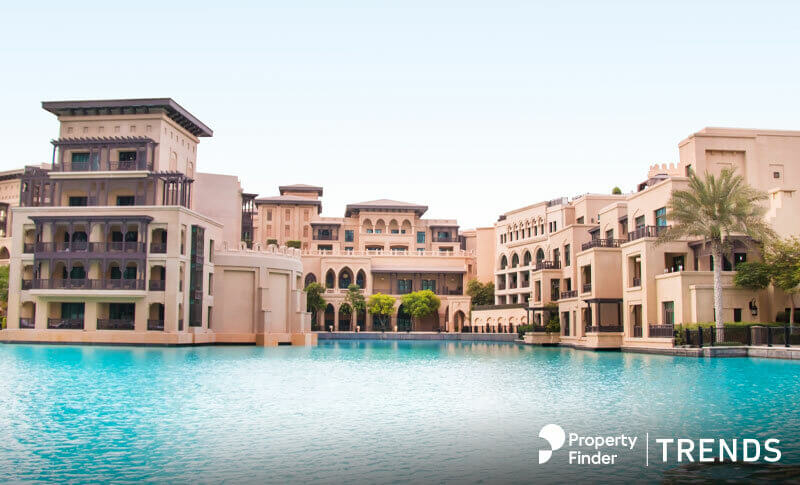
Supply Statistics and Notable Completions
Despite price declines and some uncertainty, developers are completing construction and handing over projects with speed. Some of 2019’s notable handovers so far include the DT1 tower in Downtown Dubai which added 130 apartments, 44 villas within Al Sarfa compound by Meraas in Al Sufouh, 512 villas in the Sidra Community and another 1,312 villas in the Maple I and Maple II sub-communities of Dubai Hills Estate, 48 villas in Sobha’s Hartland Estate in Mohammed bin Rashid City, and 426 apartments in Emaar’s Vida Hills. Within the master-planned community of Town Square by Nshama, we noted there were six additional projects that were expected by the end of 2018. So far this year, 579 units in Safi Apartments and 680 additional units in Zahra Breeze were completed, and we can expect the others to follow by the end of the year.
Data Finder, a real estate insights and data platform under the Property Finder Group, found a total of 20,978 residential units completed in the first half of 2019. The total comprised 14,999 apartments, 1,084 serviced apartments and 4,895 villas and townhomes. As of July 2019, there are an additional 38,426 residential units within 152 projects that have at least an 85 percent completion status and are scheduled to be completed by the end of the year. This breaks down to 29,397 apartments, 3,387 villas/townhouses, and 5,642 serviced apartments. However, even with a high completion status, we can expect that not all projects will achieve completion this year.
With the considerable amount of supply already released into the market, and the upcoming supply through 2023, lower prices and rental yields around the 5 to 6 percent mark are signals of a more mature market, and one that will yield considerable demand. With a record number of units expected for the second half of the year, we can expect prices to decline further as the market continues to absorb these units. Increased residential supply boasts well for residents as they will continue to have more leeway to negotiate prices in the rental market. For the sales market, an influx of new supply, without being outstripped by demand, will continue to make the city more affordable both for residents as well as investors.
H2 2019 Insights
Looking forward to the rest of 2019, the supply story will continue as we will see an unprecedented amount of residential supply coming in. At the end of 2018, Data Finder, a real estate insights and data platform under the Property Finder Group, found 33,982 residential units that were under construction in Dubai with a completion status of at least 65 percent and completion scheduled for 2019. Less than a few thousand of those units ended up completing by the end of 2018, and most were pushed to 2019. With nearly 20,000 already completing in the first half of 2019, and another 38,426 with a status of at least 85 percent complete, we are set for some record numbers in completions. Overall residential stock is expected to reach 637,000 units by the end of 2020, correlating to more than a 10 percent increase in recent years. While there are concerns of supply increasing ahead of demand, a more affordable market overall would be a welcome trend for residents and investors.
Due to the Dubai government’s agility in rendering new policies to navigate through an otherwise difficult economic climate, new residency visa schemes were announced in May 2018 and are now being issued. According to the General Directorate of Residency and Foreign Affairs, at least 400 visas, or “golden cards” have been issued and there are plans to issue an additional 6,800 by the end of 2019. These visas are valid for 10 years and renew automatically provided one still holds the job or investment that qualified them in the first place. A survey conducted by Lootah Real Estate Development on 1,012 local investors found that 79 percent said they are persuaded to increase their investments in the country based on the new residency initiatives. Of that group, property in Dubai was the leading investment class, with business following.
In an effort to attract further investments, the Dubai Land Department announced the launch of the Real Estate Investment Opportunities (REIOs) initiative. Within this initiative, several investment categories have been laid out, including collective real estate investment funds, partial title deeds procedures, a lease-to-own system, and investment portfolio applications. Adding on, the Executive Council approved 122 economic activities, which span 13 sectors, that are eligible for up to 100 percent foreign ownership. These activities include manufacturing, transport and storage as well as construction.
Preparations for Expo 2020 are full steam ahead and thus construction, manufacturing, and real estate are industries to keep your eye on. Additionally, out of the thousands of international food and beverage outlets expected to come for Expo 2020, 10 to 15 percent of them are expected to remain in Dubai.
Completed developer stock that is still available for purchase will continue to see interesting schemes such as the rent-to-own plan that has been popular across several projects. Earlier this year, the Dubai Land Department issued a directive that authorized the use of the rent-to-own scheme, which allows buyers to pay in monthly installments for up to 20 years toward a specific property in the designated projects.
Additionally, Nakheel is offering rent-to-own plans in Palm Jumeirah and Emaar has offered it across many of its projects. These are welcome and creative ideas that seek to address the hurdle many buyers face when having to put down a hefty deposit of at least 25 percent as well as another 7 to 8 percent in various fees.
With all of the positives, there is still an air of uncertainty in the market for some. However, it is useful to remain focused on the key factors that are being accounted for today in order to enhance the market for both the near and long-term future.

Lynnette Abad
Director, Research & Data, Property Finder



